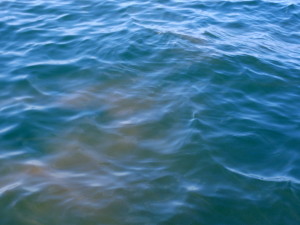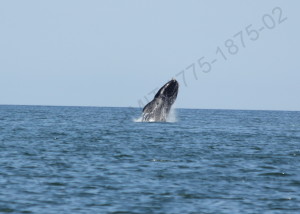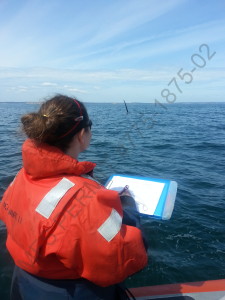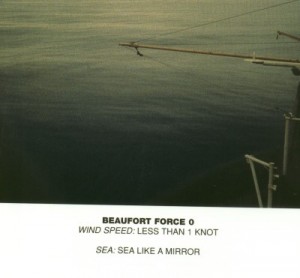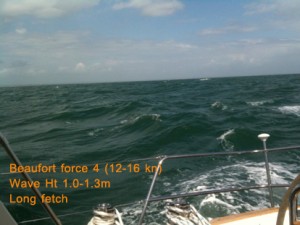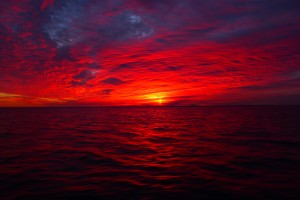The Pinniped Cognition and Sensory Systems Lab, based at the Long Marine Lab at UCSC, focuses on sensory, cognitive, and behavioral ecology of marine mammals. Researchers work closely with the resident animals, training them with operant conditioning and positive reinforcement to voluntarily participate in various projects involving active decision making. Some past projects include auditory masking, amphibious hearing capabilities, sound localization abilities, and short and long-term memory. In other words, this place is awesome. There are two big pools (22,500 gallons each), one of which can be set up to run underwater acoustic experiments. There are also some smaller pools that house the marine mammals on the compound. The water that fills these pools is pumped directly from Monterey Bay, and is therefore an accurate representation of nearby environmental conditions. The lab is also equipped with soundproof acoustic chamber for in-air experiments (check out this video because the chamber is really really cool).

Right now there are eight marine mammals at the Pinniped Lab, including two California sea lions (Zalophus californianus), a harbor seal (Phoca vitulina), two ringed seals (Phoca hispida), two spotted seals (Phoca largha), and a southern sea otter (Enhydra lutris).
Rio and Ronan, pictured below, are the female two California sea lions. Rio (top picture) was born in captivity in 1985. Because Rio’s mother did not exhibit normal maternal behavior, she was transferred to Long Marine Lab where she was hand-raised by trainers. She has participated in LOTS of studies, including some on imprinting, concept formation, visual and acoustic perception, associative learning, and memory. Rio is pretty well known in the animal behavior and psychology world, primarily because she is the first nonhuman animal to demonstrate “equivalence classification” (a cognitive ability formerly thought to be limited to humans). You can watch a video of it here.
Ronan (bottom picture) was born near the Channel Islands in the summer of 2008. She stranded multiple times in 2008 and 2009, and was eventually recovered by the Marine Mammal Center when she was found walking down Highway 1. Ronan was deemed unreleasable (reasons being that she had grown accustomed to humans and was unable to forage successfully in the wild) and became a permanent resident of the Long Marine Lab in early 2010. She is involved in both cognitive and acoustic projects, and recently ran into some youtube fame with her ability to keep the beat with music (see video here).
Sprouts, the resident male harbor seal, was born at Sea World, San Diego in 1988 and transferred to the Pinniped Lab less than a year later. He’s been involved in lots of sensory experiments, including some on hearing, vision, and vibrissae (whisker) sensitivity. Recently, Sprouts helped with a joint project between the University of Virginia and UC Santa Cruz focusing on underwater wake detection. Sprouts is a pretty easy going seal (allows lots of taction and has a great deal of patience with inexperienced animal trainers), so he also helps out with marine mammal education programs. Here’s a link to a video of Sprouts participating in an experiment and then getting his teeth brushed – yes some of the animals get their teeth brushed).

Natchek is the male ringed seal at the Pinniped Lab. He was born in the wild in 1996, but was transferred to Sea World after he stranded as a pup. Natchek has been with the lab since 2010, and is currently part of the ice seal bioacoustics project. He’s a weird little seal, but he’s also pretty cute and loves to play in the kelp that sometimes hangs into his pool.

Nayak is the youngest pinniped at the lab. She is a female ringed seal that joined the program about a year ago, after stranding as a pup and then spending some time at the Alaska Sea Life Center. Nayak is also involved in the ice seal bioacoustics project.
Amak (top) and Tunu (bottom) are two male spotted seals that came to the lab in September of 2010. Amak (the Alaskan Inuit word for “playful”) was abandoned by his mother near King Salmon, Alaska, while Tunu (named after the Yup’ik village Tununak) was born after his mother was legally harvested. Both pups were rehabilitated at the Alaska Sea Life Center and were later deemed unsuitable for release (permitting restrictions do not allow rehabilitated spotted seals to be re-released). They are also both involved in the ice seal bioacoustics project.
Last but not least, we have Odin. Odin is a male southern sea otter who joined the lab in 2009 after a stint at the Sea Otter Research and Conservation Program at the Monterey Bay Aquarium. He was born in 2003 and stranded (for the first time) at just a few weeks of age. He then re-stranded, was re-captured, and re-released several times over the next few years. Right now Odin is working with the trainers on certain behaviors that will allow them to study specific aspects of sea otter vision.
All info via the Pinniped Lab website and daily conversations with the amazing people who work there.
Leanna Matthews, PhD Student








